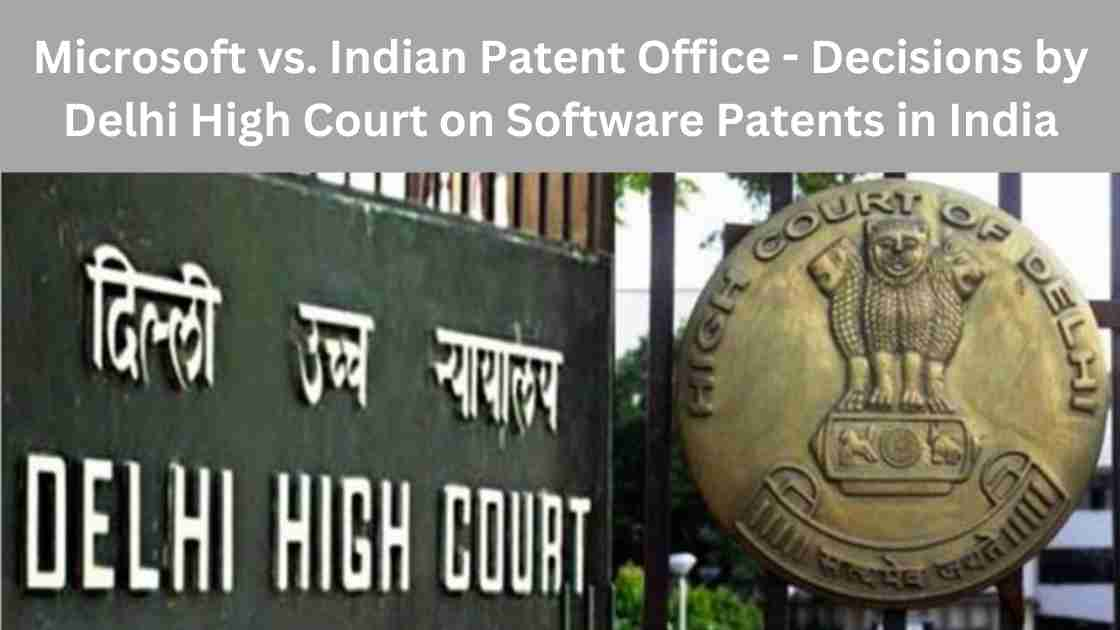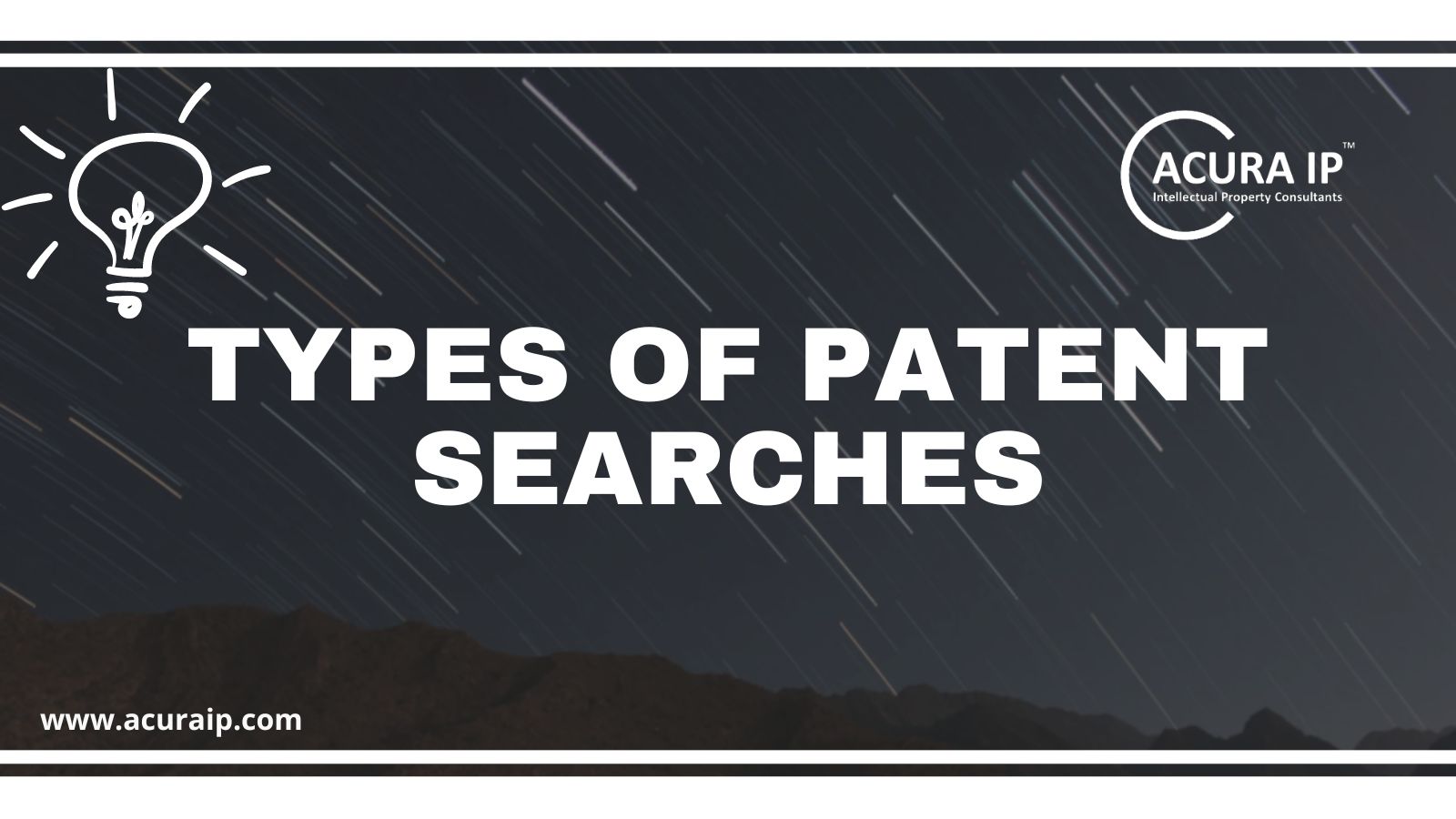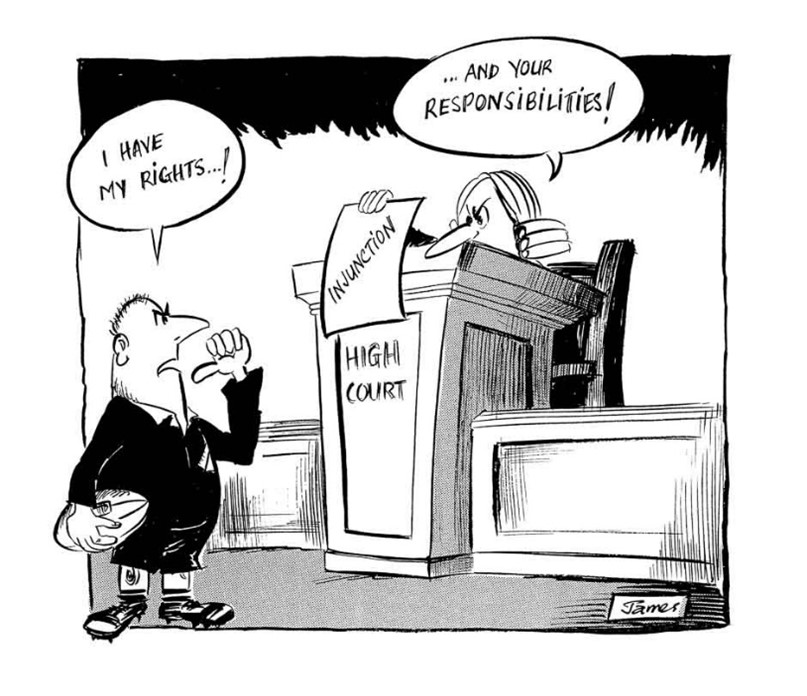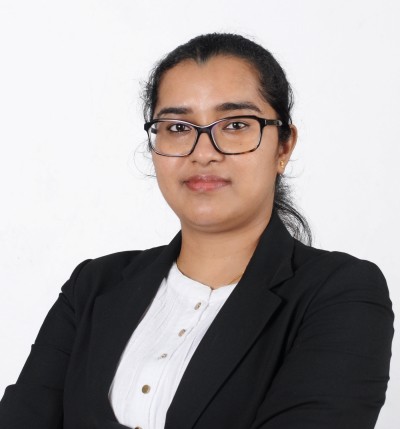
Microsoft vs. Indian Patent Office – Decisions by Delhi High Court on Software Patents in India
The part of this series focuses on the two recent judgments of the Delhi High Court passed in the statutory appeals filed by one of the leading technology giants Microsoft in the matters of Microsoft Technology Licensing, LLC v. The Assistant Controller of Patents & Designs[i], and Microsoft Technology Licensing LLC v. Assistant Controller of Patents and Designs[ii]. These judgments pertain to statutory appeals against refusal of a grant of patent applications, whereby the Delhi High Court has recommended the Indian Patent Office to adopt a broader strategy in appraising computer-related inventions. Such inventions are to be examined from the standpoint of their technical improvements and their functional significance in addressing concrete issues brought forth by such creations. The judgments provide an opportunity to revisit the concepts embodied under Section 3(k) of the Patents Act, 1970.
Brief Facts:
1. Microsoft Technology Licensing, LLC v. The Assistant Controller of Patents & Designs, 2023: DHC: 3342
The Appellant filed a patent application no. 1373/DEL/2003 for an invention titled “Methods and Systems for Authentication of a User for Sub-locations of a Network Location”, on 07.11.2003 before the Indian Patent Office. The invention involves a two-tier authentication by way of two different cookies. After examination and hearing, the grant of the application was refused primarily on the ground that the invention claimed in the application was falling under the category of non-patentable subject-matter under Section 3(k) of the Patents Act, 1970.
The objective of the patent in question is to address and lessen the security vulnerabilities associated with accessing network locations and their various sub-locations. Furthermore, it aims to facilitate user-friendly interactions with the content. The current patent application outlines a method for securely authenticating a user’s identity when they access one or more sub-locations within a network address. This effective strategy thwarts potential efforts by malicious individuals to illegitimately access these network sub-locations by unlawfully acquiring cookies from other users.
2. Microsoft Technology Licensing LLC v. Assistant Controller of Patents and Designs, 2023: DHC: 3748
The Appellant preferred the appeal against the refusal order passed by the Assistant Controller against the grant of patent application number 1983/DELNP/2008 titled “Filtering User Interface for a Data Summary Table.” The primary ground for rejection of the patent application was non-patentability under Section 3(k) of the Patents Act, 1970. To reject the application, the Assistant Controller heavily relied upon the Guidelines issued by the Office of General of Patents, Designs, and Trade Marks in the year 2016. Pertinently, the order was passed in the year 2019 when the guidelines issued in the year 2017 were in force.
Section 3(k): Overview
Section 3(k) deals with the non-patentability of a mathematical method, a business method, computer programme per se, and algorithms. Section 3(k) deals with three separate non-patentable subject matters:
- mathematical method;
- business method;
- computer programme per se and algorithms.
While evaluating mathematical and business methods tends to be straightforward, assessing computer programmes and algorithms has been a subject of significant debate and controversy. Notably, as computer programmes and algorithms are typically claimed as a set of instructions, I have grouped them as a single subject matter for the purpose of this discussion. The present judgment primarily deals with the aspect of the patentability of computer programmes.
Section 3(k): Introduction and Legislative Development
Clause (k) of Section 3 about a mathematical model or a business method or a computer program as a non-patentable subject matter was initially proposed in the Patents (Second Amendment) Bill, 1999. Nevertheless, it was the Joint Parliamentary Committee Report, presented in the Rajya Sabha and Lok Sabha on 19 December 2001 that suggested appending “per se” to the computer programms. The amendment was proposed with the intent behind the same was to clarify that while the standalone computer programs may not be patentable, however, if the computer program satisfies the criteria of an invention, the same may be eligible for a grant. After following the legislative process, this revision, embodying “computer program per se“, came into effect as the Patent (Amendment) Act, 2002.
Subsequently, the second major event happened when in the Patents (Amendment) Ordinance, 2004, clause (k) was bifurcated into two distinct sections. One section addressed computer programs and the other focused on mathematical methods, business methods, or algorithms. This change underlined once again that standalone computer programs are not eligible for patenting. However, computer programs that have an industrial application or are used in conjunction with hardware could be patented. Although this Ordinance was not ratified, the subsequent guidelines and manuals issued by the Patent Office also endorsed the approach of considering the “technical contribution” of computer-related inventions for patentability.
In 2013, the Office of General of Patents, Designs and Trade Marks [“CGPDTM”] introduced the first set of guidelines for conducting examination of computer related inventions [“CRI”]. These regulations contained comprehensive definitions for the concepts of ‘technical effect’ and ‘technical advancement’, among other key terms. In addition, the office of CGPDTM furnished multiple examples to simplify the process of determining the patent eligibility of CRIs. Subsequently, revised guidelines for the examination of CRIs were issued in the year 2016. These guidelines have laid down a three-step test and requirement of novel hardware in conjunction with a computer program. However, these revised guidelines attracted criticism due to perceived inadequacies in their clarity and consistency regarding the assessment of CRIs. Due to this widespread criticism, the office of CGPDTM again issued revised guidelines in the year 2017. These guidelines provided a comprehensive approach for the assessment of CRIs and focused more on the substance of the invention rather than the forms and claims.
Section 3(k): Judicial Precedents
In one of the leading decisions about Standard Essential Patents (SEPs), Telefonaktiebolaget LM Ericsson (PUBL) v. Intex technologies Ltd.,[iii] the Hon’ble Delhi High Court had, inter alia, clarified that any invention which has a technical contribution or has a technical effect and is not merely a computer program per se is patentable. Subsequently, appeals against this order were filed by both parties on various grounds. Recently a combined judgment was passed by the Hon’ble Division Bench of the Delhi High Court, in the appeals Intex Technologies (India) Ltd. v. Telefonaktiebolaget LM Ericsson (PUBL)[iv], which agreed with the view taken by the Ld. Single Judge and fortified the technical effect and technical contribution approach.
Meanwhile, the other order which is of again utmost significance is the order passed in Ferid Allani v. Union of India[v], the Single Judge of Delhi High Court, considering the recent breakthroughs in various fields due to CRIs, observed that the prohibition on patenting specifically applies to computer programs ‘per se’, not to all inventions deriving from them. In the contemporary digital era, innovations across fields like artificial intelligence and blockchain technologies often rely on computer programs. These innovations should not be deemed non-patentable simply due to their computer-based nature. The term ‘per se’ was included in Section 3(k) intentionally, ensuring genuine inventions based on computer programs are not unfairly denied patents. Global patent offices, use ‘technical effect’ and ‘technical contribution’ as key criteria during evaluation. If an invention demonstrates these aspects, it is considered patentable, even if it’s based on a computer program.
Analysis of the Court:
Though in both cases, the impugned orders were quashed and the appeals were remanded for fresh and comprehensive consideration by the Controllers, a clear framework was provided in the examination of the CRIs.
1. Microsoft Technology Licensing, LLC v. The Assistant Controller of Patents & Designs, 2023: DHC: 3342
Given the legislative intent and judicial precedents, the Ld. Single Judge observed that the fact that the invention in question involves a series of algorithms executed sequentially on a standard computing device does not automatically negate its technical effect or contribution. The Ld. Single Judge noted that the technical effect or contribution of the patent in question is to bolster security against unauthorized access to network sub-locations. This is achieved by the innovative use of two cookies, thus thwarting attempts by malicious users to illicitly gain access using stolen cookies. The invention’s technical contribution lies in the unique method of employing two distinct cookies, simplifying user interaction with content from feeds and enhancing the security for accessing network sub-locations, thereby improving the overall user experience. Further, the Ld. Judge held that the Controller erred in summarily rejecting the patent application and upheld that the claimed invention does not fall within the purview of Section 3(k).
2. Microsoft Technology Licensing LLC v. Assistant Controller of Patents and Designs, 2023: DHC: 3748
The Ld. Judge provided the following observations while allowing the appeal:
- The subject application was evaluated based on the CRI Guidelines, 2016, disregarding the updated CRI Guidelines, 2017 in effect at the time of the order. The CRI Guidelines, 2017 clarified patentability for CRIs removed the previous ambiguities, and fostered more clarity and consistency in the examination process. These guidelines while highlighting the legislative intent behind including ‘per se’ with computer programs under Section 3(k) of the Act established specific criteria for the patentability of CRIs in India, with an increased emphasis on ‘technical effect’ and ‘technical contributions’. To be eligible for a patent, an invention must demonstrate technical advancement beyond a mere computer program. As such, the initial examination based on the 2016 guidelines cannot stand, necessitating a re-examination of the subject invention.
- The misapplication of this Court’s decision passed in Telefonaktiebolaget LM Ericsson (PUBL) v. Intex Technologies Ltd.,[vi]. Although the Controller acknowledged the significance of the technical effect, he failed to consider the fact that a computer program qualifies for a patent grant if it exhibits a technical contribution or technical effect.
- The Controller’s reliance on the lack of novel hardware as one of the grounds for the rejection of the patent application was misplaced as the lack of novel hardware does not inherently render a computer program non-patentable. Under the CRI Guidelines, 2017, novel hardware is not a prerequisite for the patentability of computer-related inventions. These guidelines affirm that the computer program-related inventions can be patentable if they display a technical advancement and contribution beyond a generic computer program. The emphasis lies on the technical nature and effect of the invention, not the presence of specific hardware components. Therefore, the Impugned Order’s foundation was considered to be flawed and warranted reconsideration.
Epilogue:
The stance of Indian Courts regarding the patentability of CRIs has been consistently clear: while standalone computer programs may not be patentable, if these programs exhibit a technical effect and provide a technical contribution, they do not fall under non-patentable subject matter. As recommended by the Ld. Single Judge, the Indian Patent Office must adopt a broader approach when evaluating CRIs, taking into consideration the technical effects and contributions brought forth by the invention, rather than focusing solely on the use of algorithms and computer-executable instructions. An invention shouldn’t be categorized as a computer program ‘per se’ merely because it incorporates algorithms and computer-executable instructions; instead, its assessment should be based on the technical progress it represents and its pragmatic application in addressing real-world challenges.
[i] 2023 SCC OnLine Del 2772
[ii] C.A.(COMM. IPD-PAT) 140/2022
[iii] (2015) 62 PTC 90
[iv] 2023 SCC OnLine Del 1845
[v] (2020) 81 PTC 489
[vi] (2015) 62 PTC 90

Recent FAQs Published by the Indian Patent Office on Form 27
The Indian Patent Office recently released a comprehensive FAQ document…

A Comprehensive Guide to Patent Searches: Types, Examples, and When to Use Them
Patent searches are a crucial aspect of the patenting process.…

Microsoft vs. Indian Patent Office – Decisions by Delhi High Court on Software Patents in India
The part of this series focuses on the…

Case in Point: Sun Pharma Ltd vs. DWD Pharma Ltd
Case in Point is a new series where…
Categories
Recent Discussions
Recent FAQs Published by the Indian Patent Office on Form 27
The Indian Patent Office recently released a comprehensive FAQ document regarding Form 27, aimed at clarifying the requirements and procedures for patentees and…
Recent Discussions
A Comprehensive Guide to Patent Searches: Types, Examples, and When to Use Them
Patent searches are a crucial aspect of the patenting process. Whether you're an inventor, entrepreneur, or a legal professional, understanding the different types…


